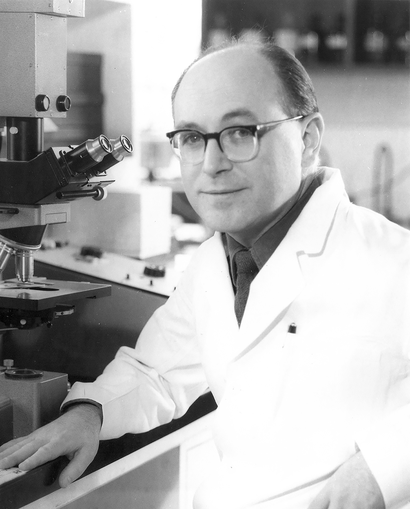Name Henry Harris Role Professor | Education University of Sydney | |
Books The birth of the cell, The cells of the body, Things Come to Life, Cell Fusion, The balance of improbabilities | ||
Sir Henry Harris, FRS, FAA (28 January 1925 – 31 October 2014) was an Australian professor of medicine at the University of Oxford who led pioneering work on cancer and human genetics in the 1960s.
Contents

Early life and education
In 1925, Harris was born to a Jewish family in the Soviet Union in what is modern-day Russia. In 1929, the family emigrated to Australia. He studied at Sydney Boys High School from 1937 to 1941. In 1941, he read modern languages first, but was subsequently attracted to medicine through his literary interests. He studied medicine at the Royal Prince Alfred Hospital and began a career in medical research rather than clinical practice.
Career
In the early 1950s, Harris moved to England to study at the Sir William Dunn School of Pathology in Oxford under Howard Florey. He completed his DPhil in 1954 and settled down to a career of academic research. In 1960, he was appointed head of the new department of cell biology at the John Innes Institute, and in 1964, he succeeded Florey as head of the Dunn School. In 1979, he was appointed as Oxford's Regius Professor of Medicine succeeding Sir Richard Doll.
Harris's research interests were primarily focused on cancer cells and their differences from normal cells. He later studied the possibilities of genetic modification of human cell lines with material of other species to increase the range of genetic markers. Harris and his colleagues developed some of the basic techniques for investigating and measuring genes along the human chromosome.
In 1965, he reported his observation that most nuclear RNA was non-coding, a view that was not widely accepted until years later.
In 1969, Harris showed that when malignant cancer cells were fused with normal fibroblasts, the resulting hybrids were not malignant, thus demonstrating the existence of genes that had the ability to suppress malignancy. Work on these tumour suppressor genes has become a worldwide industry.
In 1983, Harris was elected to the Australian Academy of science as a Corresponding Fellow. In 1993, he was knighted.
Much of Harris's work has been supported by Cancer Research UK (formerly the Cancer Research Campaign).
He died on 31 October 2014, aged 89.
